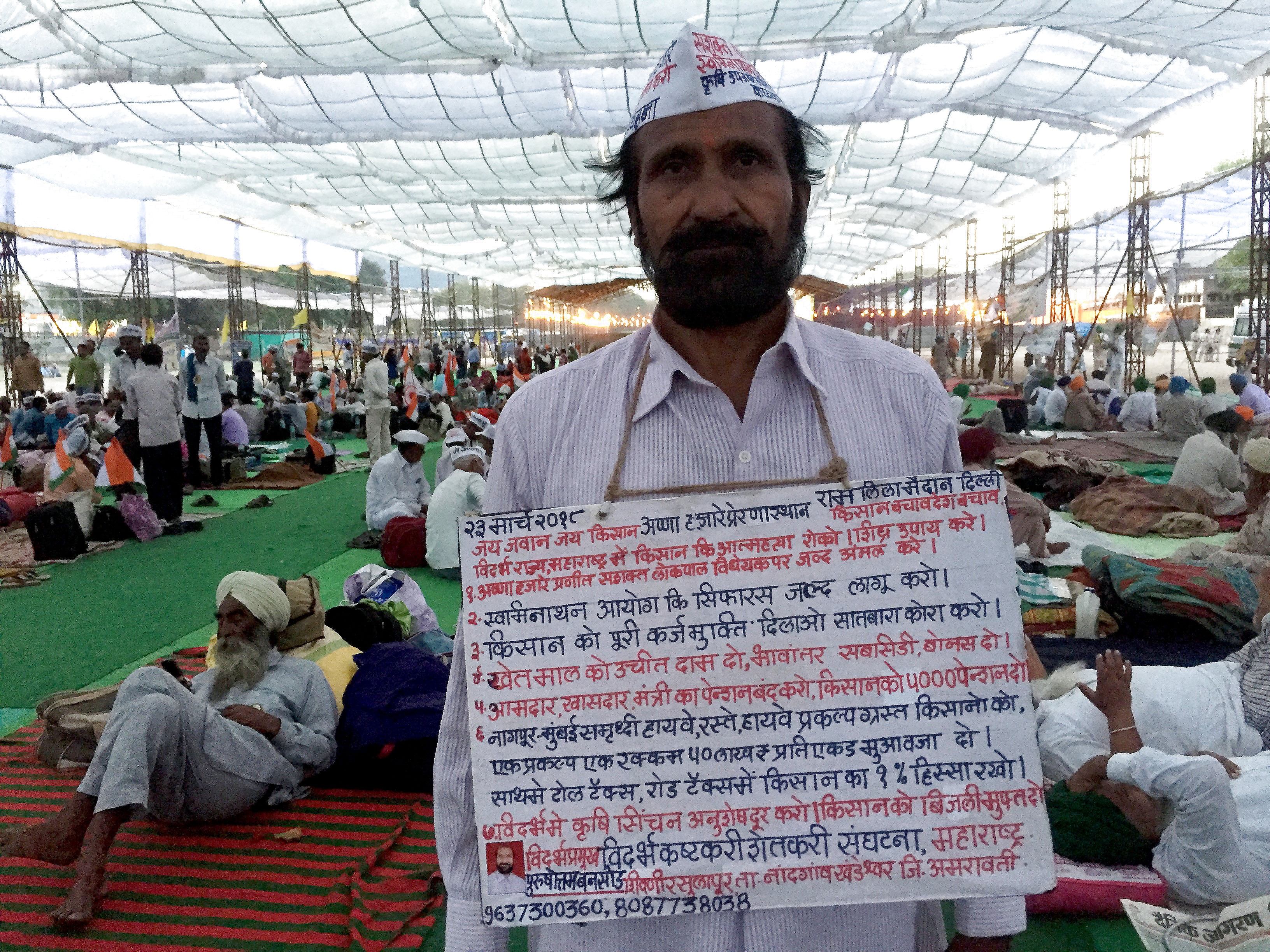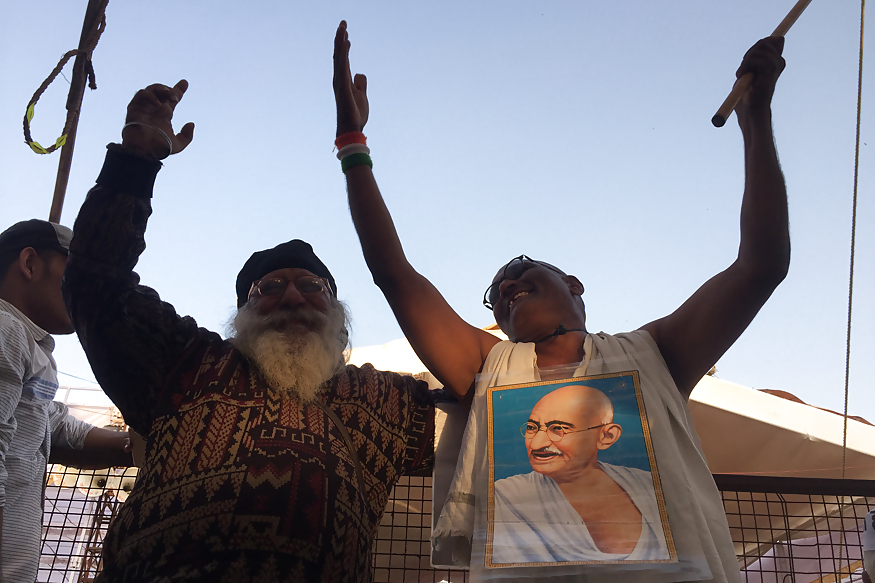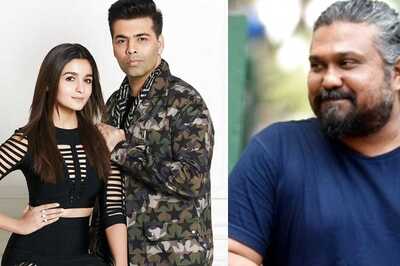
views
New Delhi: In the middle of howling news storms and the ever-present gaze of television cameras following every move of a 74-year-old man on fast, million waited pinning their hopes on 'change'. Delhi was swarming with people who were witnessing a man in a Gandhi cap take the government head on and bring the city to a halt. Anna Hazare had arrived.
That was 2011. The Anna Hazare-led protests had inspired a sea of Indians. Young and old alike — had taken to Delhi’s Ramlila Maidan to show their solidarity with the octogenarian activist. Among them was Purshottam Bhansodh, a man who had travelled all the way from Maharashtra.
Bhansodh was hopeful of the ‘change’ Anna was fighting for. He fasted along with him, answered to his every slogan. Like the rest of the crowd, he marched with Anna.
Today, seven years later, he finds himself at the same spot where he had started. Nothing has changed. Yet, Ramlila Maidan is a place of reckoning for him. It all started from here. Bhansodh is here, so is Anna.
Social activist Anna Hazare began his latest indefinite hunger strike against the central government in New Delhi on March 23 — seven years after his fast took down the Congress-led United Progressive Alliance government. Much has changed since. The current protest is not similar to that of the 2011 anti-graft agitation. There is a shift from issues of the middle class to addressing the growing agrarian distress in the country.
The new renewed movement, however, has hardly gained any traction among the masses. This year's sit-in, many say, is more an assertion of outrage and shell-shocked solidarity than a goal-setting exercise like the one in 2011.
THE LULL AFTER THE BLITZKRIEG
Hazare has promised to continue his sit-in at Ramlila Maidan till the Centre concedes to his demand for setting up of the Lokpal at a national level and Lokayuktas in the states. He also is demanding the implementation of the Swaminathan Commission report, which has suggested ways to address the agrarian crisis.
In 2011, people from all walks had rallied behind Hazare, donning the “Main Anna Hoon (I am Anna)” caps. However, the Modi government has yet not been able to finalise a Lokpal to investigate cases of corruption. Partly because the current Lok Sabha does not have a Leader of Opposition to sit on the selection panel nor does any opposition party have the required 10% strength to elect a Leader of Opposition.

To tackle the situation, an amendment to the existing Lokpal Act, asking for the post of Leader of Opposition to be changed to Leader of the largest Opposition party, was put forward. The amendment is yet to be tabled in Parliament.
THINNING NUMBERS
When Bhansodh had left Maharashtra to join Anna for the hunger strike, he was hoping it would be a bigger sit-in than that of 2011. “After all,” he had thought to himself, “there are bigger issues at stake this time.”
The growing agrarian crisis, rise in farmer suicides, unsatisfactory minimum support prices, implementation of Prof MS Swaminathan-led panel’s recommendations and the recent protests from farmers across many states of the country could have helped the hunger strike gain more momentum. It wasn’t to be.
When Bhansodh arrived at Ramlila Maidan, reality hit him. "Most of the people here are known to me. I have met them in different states during different marches in the last seven years. These are the same people," Bhansodh remarked.
The sit-in headed by Anna has hardly attracted more than 3000 people this time. While there are occasional chants of slogans in favour of farmers, the gathering remains often scattered in small groups of people who have come from different areas.
Ishwarchand Tripathi, who is one of the core members of the movement, however, believes they had already foreseen a smaller gathering. Tripathi, who has come from Madhya Pradesh, has his reasons, too.
“You can’t expect this year’s sit-in to be as popular and largely participated like that of 2011. That year there were others too who had their own following and that’s how they drew large crowds. Today, it is all about the farmers. We don’t believe in politicians and leaders,” Tripathi said.

What Tripathi says holds true. The 2011 movement had people like Arvind Kejriwal, Baba Ramdev, Kiran Bedi, Kumar Vishwas and others, who by that time had already generated a massive following. “It is true that some people brought more crowd for us in 2011. But we don’t need them anymore. Anna was used that year by those people, not anymore,” Tripathi said.
Yet, something is worrying the organisers about this year’s sit-in. Despite all the efforts put in by different farmer groups to mobilise men and women for the sit-in, the youth has hardly come forward.
Omprakash Singh, another member, agrees. "Maybe they (the youth) don’t care about farmer issues. We don’t know. But the missing youth is quite demoralising,” Singh said.
THE SCATTERED AGENDA
Indira Devi came with her family from Unao, Madhya Pradesh. The 55-year-old, who owns 10-acres of land, hopes that the government does something about the cattle that often sneak into her farm and eat the produce.
Next to her, draped in a tricolour sari is Sheela Kumari, a 70-year-old. She has come from Nashik and owns no farmland. She was told that Anna would help her in reducing the electricity bills.
Part of the group is also Latha Devi (75). “My sons are jobless. Anna will provide them with jobs,” she said.
Talk to more people and one understands that all who have joined Anna aren’t farmers this time. Most of them, who have their own problems, were told Anna would help them.

A few feet away from the stage where Anna sits are members of a panchayat union in Delhi demanding greater decentralisation of power. There are retired army men, too. They are demanding better pension.
Yet, those who oversee the sit-in, think otherwise. Satyendra Kumar, a volunteer from Gujarat, says everyone present is here for a larger cause. “People do have their own problems but they are here under one agenda. This is a march for farmer issues,” Kumar said.
SPRAWLING FATIGUE
Most of the protesters, lying on a large carpeted floor around heaps of luggage, have slowly drifted into a lethargic siesta. To keep their spirits high, occasional ‘Bharat Mata Ki Jai’ slogans on the loudspeakers are answered to in a not-so-enthusiastic tone.
People present at the sit-in are also aware of the fatigue that has slowly started to set in. Yet, there are some who want to march along, hopeful.
“Ramlila Maidan is a cautionary reminder of a moment in my life when I’d been very sure of myself, and of the movement led by Anna in 2011. This time, I am a little tired but I haven’t lost any hope,” Bhansodh said.














Comments
0 comment